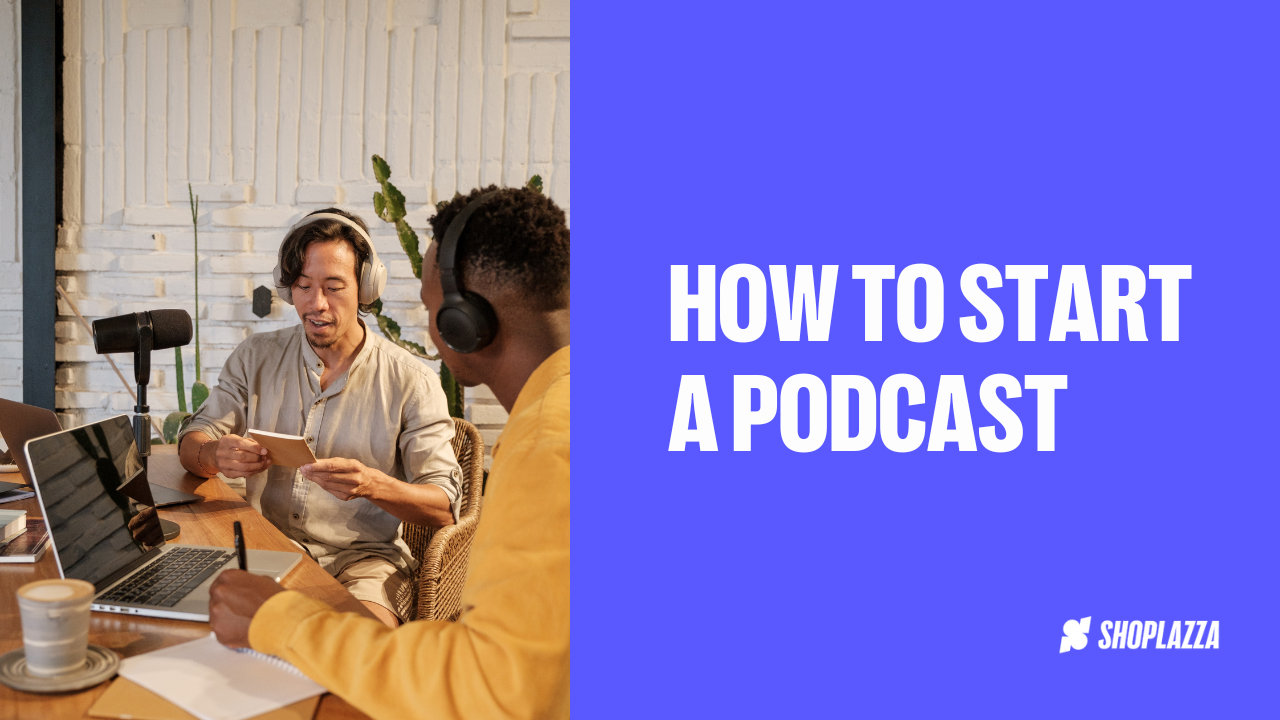Table of Content
- Intro
- Radio voice?
- How do I capture people’s attention?
- Example scenario
- How to produce a podcast?
- Troubleshooting
- Conclusion
It is true, anybody can make a great podcast for a wide audience. However, there are several factors that can play into the success of your show – we’re going to outline them in this article.
Radio Voice
The most common question that people have is: do I need a ‘radio voice’ to find success in podcasting?
Absolutely not. If you listen to the top podcasts just for 2022, you’ll hear a wide variety of voices finding their niche in the market. Even if you turn on the radio and begin flipping through the channels – you will find that no two voices are alike. Each has their own style and way of delivery. More importantly, you’ll find that it’s far from everybody that has a ‘radio voice’, as most of the people just add enthusiasm to their voice that attracts people’s attention. It is not true that a person needs vocal training for years on end just to have people listen to them for a prolonged period (although that certainly helps). Many podcasters will give you different answers regarding what the ‘it’ factor is that brings a person success in their podcasting venture. I would argue that the most important aspect to pay attention to is whether you can tell a good story. Foundationally speaking, the story that you tell must be compelling enough for people to want to continue listening. As you’re starting out, it would be wise to think about writing down a script for every episode that you produce and reading off what you wrote. Your thoughts are focused on the page, and you may forget to tell the audience something that could be super important. Having a script can also help with verbal tics such as um, ah, eh – sounds that people make when they’re thinking of what to say next, the audience probably won’t want to hear those so its best to be organized with the information that you’re trying to convey.
How Do I Capture People’s Attention?
The same is true for your brand, where you’ve got to capture people’s attention within the first couple of episodes. At this stage, people usually go one of two directions with how they want to begin presenting their brand, they are either: A) want to tell people about their accolades and product innovations that they’ve iterated upon, or B) tie the product to a person’s personal story about how this specific item or service has enhanced some facet of their living. Either creative decision has its merits, but I find that option B works better. People respond to a product when it speaks to them personally and tells them a story that they can relate to their personal circumstance. Let’s demonstrate this with an example where I use a made-up brand to give a general idea about how I would approach this.
Example Scenario
Your brand, ABC Good Foods has recently launched a new line of health food supplements that infuse several new, lesser-known fruits to give the body that active kick they need in the morning. Also, previously you had supply chain issues with order fulfillment, a lot of customers complaining that your product wasn’t being delivered on time. Thankfully, you found a new service that takes care of your problems, and you want to let your customers in on the new, positive changes to ABC Good Foods with your podcast, the ABCs Of Health. Due to your recent success with the new drink formula, you’ve been getting a lot of testimonials regarding your product – some speak about how it has helped them with stomach problems, low energy levels, and getting quality sleep.
When you write down your script for the podcasting episode – you would start off with the positive changes that you’ve addressed for your company and brand, the ‘bug list’ so to speak. People that are aware of ABC Good Foods and use the products for a prolonged period, are critical to the quality of the product and its delivery. You’d want to explain how it was addressed, and how it benefits the customer in the long run. People will want to understand that the lines of communication between them and you are very short, and you address issues as soon as they pop up – making it one of the first things you talk about in your podcast, is generally good practice. It can demonstrate your willingness to resolve any outstanding concerns, and how you’ve solved them. After you finish with that, you’d want to position your new product improvements by taking the angle of how it would benefit the customer, this would be your chance to use any testimonials and involve your community in your podcast. By engaging them on social media before your podcasting episode, you are essentially getting content to talk about, as well as getting an honest look at what people think about ABC Good Foods. If you’re getting a lot of positive feedback, you can potentially turn it into a campaign. Following your feedback section in your episode, then you want to let customers in on product specifics, now that they know how the product benefits them – its time to go into specifics regarding how you produce the product. Usually, with something related to health – people really investigate this, but you just want to gauge how important it is to your audience with regards to how detailed you want to get. To finish the episode, you might want to let your audience in on some exclusive information, or what to expect soon with ABC Good Foods.
How To Produce A Podcast?
This is just one way to go about your podcast, as it is all completely individual and varies depending on what you’re trying to convey. The needs of any business vary greatly from one another, so it makes sense to focus on what you can offer to your customer. With how unique each business need is, means that it requires a unique audio profile for your listener. Someone turning on a podcast should recognize who is speaking by their unique vocal presentation. It is wise to stick to a specific speaking style, as it helps your audience get used to your voice.
It is going to take some time to generate your own vocal flavour that resonates with the audience. In the early episodes of your podcast, it can be wise to try out different ways of presenting your information to see which style can get the most listens. As difficult as it is to just predict what the audience wants to hear, it is not impossible to usually get that kind of information within a small number of episodes. Now, your vocal ability can only get you so far, the rest of that individual style that you create for your podcast is going to come from your equipment.
You don’t need a 2000$ setup to begin podcasting, a much cheaper setup will work just fine. Besides its likely that for an expensive setup – you’re going to need to set it up in a special way for you to get 2000$ worth of sound quality right out of the packaging. If you don’t have any audio engineering knowledge, you’re going to have to go through a lot of trial and error before you achieve a publishable level of quality. Note that popular audio platforms where people commonly listen to podcasts like Spotify and Apple Music have their own requirements for getting something on their platform.
Troubleshooting
As for equipment specifics, it can vary depending on your voice, budget, and environment. Generally, it would be worth looking at products that are under 500$. The bare minimum that you’d need is a decent microphone, a pop filter, a mic stand, XLR cable, a mixer, along with a pair of headphones. For software, you can pretty much get everything done on Audacity – which is free. You don’t have to break the bank to get a decent sounding podcast, as most of your listeners likely don’t have super high-end headphones that can pick up any sound fluctuations or irregularities. People deal with their own issues on a case-by-case basis, in which case, YouTube is your friend, and you’ll probably find several other people who have resolved your exact issue. Your biggest hurdle in quality is going to be your environment. Whether your room generates echo, or you’ve got loud noises coming from outside your window – you will want to weed out as many problems in your trial-and-error phases as possible. Unless you’ve got an ideal, soundproof studio, your environment is not going to be perfect, and you will likely need to adjust the settings on your equipment to account for that. Perhaps it might help turning down the gain on the microphone and speaking a certain distance away from it. Or you might think about investing a small sound isolation chamber for your microphone that has the sound mitigating foam padding on the sides. Perhaps even, you will find that editing your audio in post-production on Audacity works super well with your situation. It is going to take some time to get that level of quality that you want, so you will need to be very patient.
Conclusion
Looking forward, starting a podcast can be nerve-wracking as you’re going to get a myriad of information constantly being advised to you with regards to what you should do. However, the foundation to starting a podcast is always the same: trial and error to make sure that whatever your goals are – they work production-wise with your setup. Think of it as an extension of your voice, as a method to facilitate effective audio production but you are the main event. You need a story to tell, proper market positioning, knowing your audience, the right equipment, and a quiet environment to really start podcasting properly. Podcasts are actually one of the most popular ways of conveying information about your brand, as people usually listen to them on their commute or when they are occupied with something else. You’ve got a lot of opportunities to convert audiences as they are likely going to hear something that resonates with them during their daily activities. With that, we hope you enjoy your podcasting journey and hope to see your entry on the top listening platforms!
Sign up today to get a 15% discount! Turn dreams into actions at Shoplazza!



